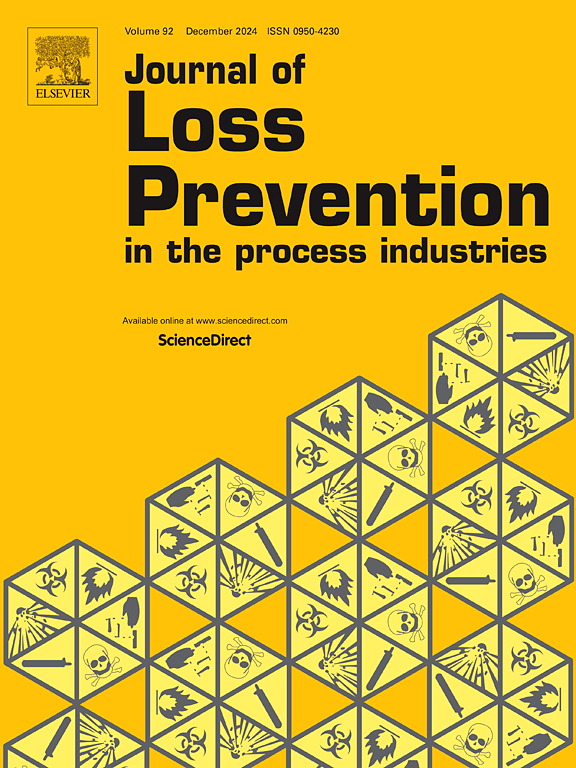Scenario deduction of explosion accident based on fuzzy dynamic Bayesian network
IF 3.6
3区 工程技术
Q2 ENGINEERING, CHEMICAL
Journal of Loss Prevention in The Process Industries
Pub Date : 2025-04-16
DOI:10.1016/j.jlp.2025.105613
引用次数: 0
Abstract
In order to effectively tackle dynamic and uncertain challenges related to hazardous chemical accidents' occurrence and progression, this research establishes a model for identifying scenario elements in hazardous chemical explosion incidents based on crucial scenario states, vulnerable environmental conditions, emergency responses, and evolving objectives during these incidents. Subsequently applying this model to dynamic Bayesian network (DBN) modeling enables integration of triangular fuzzy set theory into DBN methodology for constructing a fuzzy dynamic Bayesian network (FDBN) specific to hazardous chemical accidents. Additionally leveraging complex networking expertise allows conducting sensitivity analyses along with critical node assessments pertaining to impact factor nodes associated with disaster-prone environments as well as emergency responses. The findings demonstrate that computed probabilities within this simulated scenario network align with actual occurrences of these incidents while also simulating their evolutionary trajectories across diverse disaster-prone settings alongside various emergency response scenarios. Moreover, this investigation identifies pivotal influencing factors including ambient surroundings as well as firefighting capabilities thereby furnishing essential decision support for managing such emergencies.
基于模糊动态贝叶斯网络的爆炸事故情景推演
为了有效应对危险化学品事故发生和发展过程中的动态和不确定性挑战,本研究基于危险化学品爆炸事件的关键情景状态、脆弱环境条件、应急响应和演变目标,建立了危险化学品爆炸事件情景要素识别模型。随后将该模型应用于动态贝叶斯网络(DBN)建模,可以将三角模糊集理论集成到DBN方法中,构建针对危险化学品事故的模糊动态贝叶斯网络(FDBN)。此外,利用复杂的网络专业知识,可以进行敏感性分析以及与灾害易发环境和应急响应相关的影响因素节点相关的关键节点评估。研究结果表明,该模拟情景网络中的计算概率与这些事件的实际发生情况一致,同时还模拟了它们在不同灾害易发环境和各种应急响应情景中的演变轨迹。此外,这项调查确定了关键的影响因素,包括环境环境和消防能力,从而为管理此类紧急情况提供必要的决策支持。
本文章由计算机程序翻译,如有差异,请以英文原文为准。
求助全文
约1分钟内获得全文
求助全文
来源期刊
CiteScore
7.20
自引率
14.30%
发文量
226
审稿时长
52 days
期刊介绍:
The broad scope of the journal is process safety. Process safety is defined as the prevention and mitigation of process-related injuries and damage arising from process incidents involving fire, explosion and toxic release. Such undesired events occur in the process industries during the use, storage, manufacture, handling, and transportation of highly hazardous chemicals.

 求助内容:
求助内容: 应助结果提醒方式:
应助结果提醒方式:


